#agnès de france
Explore tagged Tumblr posts
Text
Philippe Auguste
The Capetian monarchy was an institution, with traditions and restrictions. But the personal element in the medieval period always remained a significant factor. To what extent the government of any individual king was personal is not easy to determine. In general it is true that counsellors could advise, but could not normally decide policy. Others were there to obey the will of the monarch, perhaps to help form it, but not to take over from it. Philip's views were shaped by many influences: by observing his father's work, by his father's advice, by his own education, by the advice he received from counsellors, by the experience of governing, by the views of churchmen, theologians, popes and fellow rulers, but in the end they were his views and could be imposed to the extent of the power of the monarchy at the time. Philip's court and government reflected his own personality. Gerald of Wales pointed out its contrasts with the Plantagenet court, the French king's being more sober as we have seen, more quiet in tone, more proper, with swearing forbidden. Philip brought about significant changes: less reliance on the magnates, a lesser role for his family; a greater place for the selected dose counsellors and for relatively humble knights.
It has been suggested that Philip's intellectual gifts were 'modest', which, although direct evidence is not easily available, seems to conflict with what we know about the king's abilities. He was able to deal with the bright men around him, such as Peter the Chanter. He was able to supervise governmental development and the administration, which needed a considerable grasp of accounting as well as a degree of literacy. His ability to deal with the papacy reveals a clear understanding of legal argument and his rights, and a firm determination to protect them. He was rarely outmanoeuvred by even the cleverest of his opponents. Philip went to war as any leader of his period would, but he was more prepared than most to seek and make peace.
Rigord said that Philip's aim was 'to deliver the weak from the tyranny of the strong', and that 'his first triumph is to see peace re-established'. His tolerance and mild temper puzzled the aggressive Bertran de Born, who thought the French needed a leader and had not found one in Philip, who did not become angry. Bertran preferred the attitude of Richard the Lionheart, for whom 'peace and truce have never been noble'. For Bertran it was a sneer to suggest that Philip liked peace even more than the noted diplomat Archbishop Peter of Tarentais. Bertran had cause to regret his underestimation of Philip, when the king later used his authority to replace Bertran as lord of Hautefort. No doubt that act was executed on the advice of counsellors, and Bertran could further nurse his belief that Philip was 'badly advised and worse guided'.
Philip did in fact at times lose his temper, but usually with some point, as when he chopped down the elm on the Norman border, declaring by actions rather than words that he no longer accepted the Plantagenet stance on their rights to bring the king to the edge of their territories before they would hold discussions. Nor were his diplomatic activities always appreciated by his enemies. He could manoeuvre and manipulate with the best of them; he was the 'sower of discord' according to one English chronicler. To take just one example of his methods: in the conquest of Normandy he knew that Rouen was the key, which afterwards he would need to govern. Therefore he did not simply crush Rouen, and chose to discuss with the leading citizens what they would gain from surrender. If allowed in, he promised: 'I will prove a kind and just master to you.' In modern times he has been called 'a statesman of the first water', 'the first royal statesman in French history' ; it is a reputation which in this country we have somehow failed to recognize.
[..]
Philip was generally modest and unassuming, as we have seen in contrast to Richard the Lionheart both in Sicily and in the Holy Land. Bertran de Born thought the French king presented his deeds in tin-plate rather than in gilt. But Philip was aware of the need to present a regal figure, dignified if not flamboyant: a public face of modesty but a recognition of his own powers. The scene painted by Mouskes of Philip entering a church and praying: 'I am but a man, as you are, but I am king of France', has a deep truth to it. There is also a story of Peter the Chanter telling Philip what were the attributes of an ideal sovereign; Philip replied that he should be contented with the king that he had.
The efforts to show his connection back to Charlemagne demonstrate Philip's effort to bolster the Capetian position. His mother, Adela, and his first wife, Isabella of Hainault, both claimed descent from Charlemagne. His natural son was named Peter Charlot, after the great emperor. And the Carolingian claim seems to have become generally accepted. Innocent III declared: 'it is common knowledge that the king of France is descended from the lineage of Charlemagne'. No doubt there was some weakness in the argument, but William the Breton refers to him as 'the descendant of Charlemagne', and the Welshman Gerald believed that Philip aimed to restore the monarchy to 'the greatness which it had in the time of Charlemagne'.
Philip wished to present an imperial image of French monarchy, hence the use of an eagle on his seal, the label 'Augustus' applied by Rigord, his sister's marriage to two Byzantine emperors, and the raising to the Latin imperial throne of two of his brothers-in-law. The same point was being emphasized when the sword of Charlemagne had been brandished at Philip' s coronation ceremony. As one of the Parisian masters wrote in 1210: 'the king is emperor in his realm'. The royal family was being distanced from other families, however noble; royal power was being set above noble power. It was not just a question of wealth and lands, but of the nature of monarchy, its prestige, its religious and mystical significance. The claimed association with Charlemagne, by the twelfth century a powerful figure in legend as well as a great historical emperor, was an important part of this process.
Philip was a tough-minded individual, he would not otherwise have been such a great king. Those who had experience of dealings with Louis VII found Philip a much harder opponent with more steel in his character. He had tremendous determination, and strong views on basic policies. Before his father's death, while still a teenager, Philip was prepared to rule, issuing charters without his father's consent, reacting against some of his father's policies. Before long he threw off the shackles of his mother and her powerful family, and soon afterwards of the count of Flanders. The English chronicler Howden thought he did it because he 'despised and hated all whom he knew to be familiar friends of his father', which seems a distortion, but at least underlines the point that Philip was of independent mind from the first.
Philip preferred his close counsellors to be lesser men who accepted their subordinate role without question. We may be clear that his policy expressed his own views. There was an encounter at one of the conferences between Philip and King John which occurred between Boutavent and Gaillon, when the two kings were 'face to face for an hour, no one except themselves being within hearing', a brief comment but one which allows a sudden and vivid insight into the personal nature of thirteenth-century diplomacy.
Of course Philip took counsel, and made a point of doing so, but he was too independent a man to be dominated by another. And though inclined to prefer diplomatic solutions, he was a good enough warrior to win respect; as William the Breton said 'his arm was powerful in the use of weapons'. Bouvines was the most important battle of the age, and Philip was the victor. Where the loss of documentary evidence from the earlier period often makes it impossible to be certain that Philip was the innovator or the initiator, a knowledge of his character, his able leadership and his drive, make him far and away the likeliest candidate. One of Philip's major achievements was to shift the balances of an intricate system of government in France in favour of the Capetian monarchy, so that its views were more often heeded, and came to be heeded in areas where that had not previously been the case.
Jim Bradbury- Philip Augustus, King of France, 1180-1223xiii
#xii#xiii#jim bradbury#philip augustus king of france 1180-1223#philippe ii#philippe auguste#pierre le chantre#rigord#bertran de born#richard coeur de lion#adèle de champagne#isabelle de hainaut#agnès de france#jean sans terre#battle of bouvines
6 notes
·
View notes
Text

L'Art et la mode, no. 49, vol. 47, 4 décembre 1926, Paris. Robe de popeline marine et crêpe imprimé "Martinique". Création Agnès. Tissu Prevost de Lyon. Bibliothèque nationale de France
#L'Art et la mode#20th century#1920s#1926#on this day#December 4#periodical#fashion#fashion plate#cover#color#bibliothèque nationale de france#dress#Modèles de chez#Agnès
10 notes
·
View notes
Text

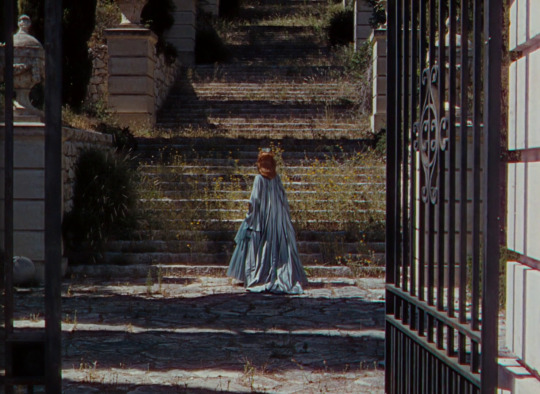
Les fameux escaliers: Villa Léopolda, Villefranche-sur-Mer
Du Côté de la Côte (1958) & The Red Shoes (1948)
#monte carlo#french riviera#côte d’azur#cote d'azur#france#escalier#the red shoes#les chaussons rouges#along the coast#du côté de la côte#film locations#french movies#british film#villefranche#villefranche sur mer#1940s#1950s#1950s films#powell and pressburger#agnès varda
125 notes
·
View notes
Text
Nice : la mère d'Agnès Le Roux, Renée Le Roux, est morte à 94 ans

Renée Le Roux est décédée vendredi dernier à l'âge de 94 ans. • © Photo : Valéry Hache/AFP
Écrit par Anne Le Hars Publié le 06/06/2016 à 09h03 Mis à jour le 11/06/2020 à 09h39
Renée Le Roux, la mère d'Agnès, l'héritiaire du casino de la Méditerranée à Nice disparue en 1977, est décédée vendredi dernier à l'âge de 94 ans.
Elle était l'ancienne dirigeante du casino Le Palais de la Méditerranée, Renée Le Roux est connue pour avoir passé 37 ans de sa vie à rechercher sa fille Agnès, mystérieusement disparue à La Toussaint en 1977.
Après trois procès d'assises, l'avocat niçois Jean-Maurice Agnelet a finalement été reconnu en 2014 coupable du meurtre d'Agnès Le Roux, dont il fut un temps l'amant, et condamné par la cour d'assises de Rennes à 20 ans de réclusion criminelle.
Née le 22 décembre 1922 à Anglet (Pyrénées-Atlantiques) d'un père basque et d'une mère charentaise, Renée Le Roux, Bousquet de son nom de jeune fille, avait été mannequin avant-guerre pour les maisons Grès et Balenciaga avant d'épouser en 1942 Henri Le Roux, un homme d'affaires qui fut notamment PDG de la Société des bains de mer (SBM) à Monaco, et avec qui elle aura quatre enfants.
Tentative de prise de pouvoir
En 1967, au décès de son mari, Renée Le Roux devient actionnaire avec ses enfants du casino du Palais de la Méditerranée, à Nice, et se trouve confrontée en 1977 à la tentative de prise de pouvoir, à laquelle elle s'oppose farouchement, d'un concurrent, Jean-Dominique Fratoni, exploitant du Ruhl, un établissement voisin du sien.
Au cours de cet épisode, Agnès Le Roux s'était, quelques semaines avant sa disparition, désolidarisée de sa famille en revendant ses actions au groupe concurrent, provoquant ainsi un renversement de majorité.
Renée Le Roux avait publié chez Albin Michel en 1989, avec la collaboration de son fils Jean-Charles Le Roux, "Renée Le Roux, une femme face à la Mafia", un témoignage dans lequel elle racontait par le menu la prise de pouvoir de Jean-Dominique Fratoni et son combat pour que Jean-Maurice Agnelet soit jugé.
- avec AFP -
#Renée Le Roux#Agnès Le Roux#Le Palais de la Méditerranée#Jean-Maurice Agnelet#France#Crime#Jean-Dominique Fratoni
0 notes
Text
Comment consommer du cannabis sans le fumer
En Suisse, le cannabis à faible taux (moins de 1%) de Tétra-Hydro-Cannabinol (THC) fait désormais partie des produits facilement accessibles. En kiosque, dans certains supermarchés, en boutique spécialisée ou sur des sites en ligne, on le trouve sous différentes formes y compris en herbe. Grand raté des services de santé suisses, aucune information sur les modes de consommation évitant la…

View On WordPress
#Agnès Buzyn#Cannabis#France#Global drug survey#GREA#lfel#NORMl#Principes Actifs#réduction des risques#répression#Suisse
0 notes
Text
📍Menton,France 🇫🇷
Hey there! Have you ever been to Menton, the Pearl of France? If not, you're in for a treat! Save this reel for your next trip to the French Riviera and explore this unique blend of French and Italian influences. Here are my top picks for an unforgettable visit:
Explore the Old Town: Wander through the narrow, colourful streets and soak up the Mediterranean charm.
Relax at the Beach: Enjoy the crystal-clear waters and the serene atmosphere of Menton's beaches.
Try the lemon-based desserts.
Hike to the Italian Border: Follow the Sentier du Littoral trail from Menton to the Italian town of Ventimiglia. This scenic hike takes you along the stunning coastline, offering breathtaking views of the Mediterranean.
Stroll Through the Gardens: Don't miss the Jardin Serre de la Madone and the Val Rahmeh Botanical Garden, both bursting with unique plants.
Check Out the Lemon Festival: If you're here in February, the Fête du Citron is a must-see!
🍋 Visit St-Agnès: Just a short drive from Menton, St-Agnès is the highest coastal village in Europe. Explore its mediaeval streets, visit the castle ruins, and enjoy panoramic views of the coast.
Visit the Jean Cocteau Museum: Dive into the world of this famous artist in a stunning seaside museum.
🍋Day trips from Menton:Monaco (20min🚈),Eze Village (1h20min🚈🚌),Nice (40min🚈),Ventimiglia (15min🚈),Antibes (1h🚈),Cannes (1h15min🚈),Saint-Jean-Cap-Ferrat (1h 🚈🚌)
@zenwander
Bonjour France 🇫🇷
15 notes
·
View notes
Text

Gerard David (Netherlandish, 1460-1523) La Vierge entre les vierges, ca.1509 Musée des Beaux-Arts de Rouen, France La Vierge Marie et l'Enfant Jésus entourés de Saintes Martyres. De gauche à droite, Dorothée, Catherine d'Alexandrie, Agnès, derrière elle une inconnue puis Fausta, Apolline, Godelive, Cécile, Barbe et pour finir Lucie. De part et d'autre se tiennent le peintre et son épouse.
#gerard david#netherlands#art#fine art#european art#classical art#europe#european#oil painting#fine arts#europa#1400s#1500s#christian#christian art#christianity#catholic#catholic art#catholicism#roman catholic#classic art#traditional art#painting#the virgin mary
46 notes
·
View notes
Text

As Noites de Cabiria
I, F, 1957
Federico Fellini
9/10
Fatalismo Otimista
As noites de Cabiria, de 1957, é o último filme do período neo-realista de Fellini e também, conjuntamente com La Strada, de 1954, uma das suas obras primas, não só deste período mas de toda a sua carreira. O próximo filme do realizador seria La Dolce Vita, três anos depois, e com ele começaria uma nova fase da sua obra, que poderíamos classificar como integrada na "nova vaga" do cinema italiano, onde o simbolismo, a metáfora e uma boa dose de existencialismo, passariam a integrar, de forma crescente, o cinema de Fellini.
Mas aqui, em 1957, quando a "nouvelle vague" já começava a despontar em França (La Pointe-Curte, de 1955 e de Agnès Varda, é geralmente apontado como o primeiro filme desta corrente), Fellini e Antonioni, que neste mesmo ano estreou O Grito, ainda navegavam, manifestamente, por águas neo-realistas. Mas de forma brilhante.
As Noites de Cabiria é uma obra prima do neo-realismo, mesmo tardia, e tal foi amplamente reconhecido na época, com inúmeros prémios, Óscar de melhor filme estrangeiro, prémio de melhor atriz em Cannes para Giulietta Massina, prémio Zulueta em San Sebastian, entre muitos outros prémios e nomeações, nacionais e estrangeiros. Mas é igualmente reconhecido pela posteridade, que coloca invariavelmente esta obra entre as melhores do realizador italiano.
De facto, tal como em La Strada, Fellini tira partido do caráter tragicómico do personagem interpretado por Giulietta Massina, para acentuar o caráter dramático, mas ao mesmo tempo absurdo, da vida. Esta Itália do pós-guerra neo-realista era um inferno na terra, em que a luta pela sobrevivência tornava qualquer cordeiro num leão, capaz das maiores atrocidades, por um punhado de liras. E, no entanto, bastava um acordeão, uma dança, um copo de vinho, para reconciliar o mais desafortunado com a vida e dar-lhe forças para continuar a lutar.
Nestas condições extremas, não há espaço para dramas psicológicos, a vida é simples e impulsiva, viver ou morrer, sobreviver a todo o custo, ou morrer de fome, sem olhar a meios.
Essa amoralidade da luta pela sobrevivência, associada à simplicidade com que se aceita a fatalidade da vida e os pequenos prazeres que ela proporciona, mesmo no meio da miséria, fazem destas obras um monumento ao humanismo e ao otimismo, que teima em olhar sempre o lado positivo da vida, mesmo no meio da desilusão e da desgraça.
Um hino ao amor pela vida.
Optimistic Fatalism
The Nights of Cabiria, from 1957, is the last film of Fellini's neo-realist period and also, together with La Strada, from 1954, one of his masterpieces, not only from this period but from his entire career. The director's next film would be La Dolce Vita, three years later, and with it a new phase of his work would begin, which we could classify as integrated into the "new wave" of Italian cinema, where symbolism, metaphor and a good dose of existentialism, would increasingly become part of Fellini's cinema.
But here, in 1957, when the "nouvelle vague" was already beginning to emerge in France (La Pointe-Curte, from 1955, by Agnès Varda, is generally considered the first film of this current), Fellini and Antonioni, who in that same year premiered The Scream, were still clearly navigating neo-realist waters. But brilliantly.
The Nights of Cabiria is a masterpiece of neo-realism, even late, and this was widely recognized at the time, with numerous awards, Oscar for best foreign film, best actress award at Cannes for Giulietta Massina, Zulueta award in San Sebastian, among many other awards and nominations, national and foreign. But it is equally recognized by posterity, who invariably places this work among the Italian director's best.
In fact, as in La Strada, Fellini takes advantage of the tragicomic nature of the character played by Giulietta Massina, to accentuate the dramatic, but at the same time absurd, nature of life. This neo-realist italian post-war was a hell on earth, in which the fight for survival turned any lamb into a lion, capable of the greatest atrocities, for a handful of lire. And yet, all it took was an accordion, a dance, a glass of wine, to reconcile the most unfortunate with life and give them the strength to continue fighting.
In these extreme conditions, there is no room for psychological dramas, life is simple and impulsive, live or die, survive at all costs, or die of hunger, regardless of the means.
This amorality of the struggle for survival, associated with the simplicity with which the fatality of life is accepted and the small pleasures it provides, even in the midst of misery, make these works a monument to humanism and optimism, which insists on always looking to the positive side of life, even in the midst of disappointment and misfortune.
A hymn to the love of life.
5 notes
·
View notes
Text


Oh, my sweet little girl… what are the chances that Agnes is Father Hugue’s lost sister?
Theories and conspiracies about Trinity Blood Or when you have serious things to think about, but you'd rather theorize about fictional characters…
Obviously, I brought this version of my little argument… considering that most TB fans are fluent in English. Enjoy! (Or not.)
🚨Warning: The following text contains highly disconnected theories, poorly substantiated hypotheses, and an alarming amount of daydreaming. Read at your own risk (and enjoy the chaos).🚨
Before diving into my ‘little big’ musings, I want to clarify that I haven’t read all the volumes of the novel yet. So, my theory might fall apart (or not) once I gain access to more information.
The fact is, as a Japanese language student, translating Trinity Blood has been quite the challenge. I have this annoyingly meticulous habit of wanting to preserve both the literality and coherence of the original text.
But without further ado, let’s delve into the theory (aka daydream) that’s been frying my brain cells…
What are the chances that Agnes is Hugue de Watteau’s lost sister?


In R.A.M I, we are introduced to Father Hugue de Watteau and his mission in Amsterdam, the capital of the Netherlands, one of the countries in the Low Countries (Netherlands, Belgium, Luxembourg, and parts of northern France).
He is tasked with solving the case of murders that occurred in the Old Church of Amsterdam, located in the territory of one of the Count Four, a vampire alliance among the four cities that lead the underworld in the Low Countries.
Count Four:
Amsterdam (Netherlands)
Antwerp (Belgium)
Brussels (Belgium)
Bruges (Belgium)
This chapter provides a glimpse into Hugue’s past and his family, the Watteaus, as well as some details about Agnes. According to the Trinity Blood Wiki, she is described as Hugue’s distant cousin.
“The Watteau family was a legendary family of noble mercenaries in the Low Countries. For generations, they also served as chief commissioners of the Alliance of Four Cities, and in the absence of a national army, they represented the greatest military power and an excellent and rigorous police force, demonstrating remarkable skill in maintaining public order — but now they are a presence relegated to history. This is because, about nine years ago, their castle in Bruges was attacked on a large scale by vampires, and the head of the family, along with its main members and followers, were all massacred.” (SWORD DANCER – Part II – excerpt from the novel)
During this attack, Hugue had both his arms severed, and his younger sister was kidnapped.
Hugue mentions his sister’s name, and this, ladies and gentlemen, is where my pilgrimage began.



Why did I notice this?
.
.
.
The name mentioned for his sister in katakana is:
アニエス (Aniesu)
Which is a transliteration of the French name Agnès, based on its French pronunciation.
Putting the name Agnès into Google Translate, you can see that its pronunciation closely resembles the katakana Aniesu.
That’s one point.
Then, we are introduced to this lovely lady here:


Agnes, the novice from Amsterdam…
Her name is presented as:
アグネス (Agunesu)
This is a phonetic transliteration of the name Agnes.
At first glance, nothing seems off, but did you catch the subtle 'difference' between these names?
If we consider that the French name Agnès, when transcribed into other Western languages, 'becomes' Agnes (in this case, Amsterdam, in the Netherlands), that’s another point.
Hugue, his sister, and, in this case, Sister Agnes are from Bruges, located in Belgium, which in turn has linguistic influences from French, as well as Flemish (Dutch), and German.


The first map is of Trinity Blood’s world, and the second is a more detailed reference map…
In the novel, it is mentioned that Agnes is also a Watteau, but on the day of the attack on the family’s castle, she was the only one not present, as she was ill and under the care of her nursemaid, outside the castle grounds...
With the fall of the Watteau family, Sister Agnes was sent from Bruges, Belgium, to the Church of Amsterdam in the Netherlands.
Why am I harping on the names and countries?
Hold on… I’m prolix, in case you hadn’t noticed…
Well, my main thesis is that if Agnes from Amsterdam is Hugue’s sister, whose original name was Agnès (Aniesu), the change in location may have caused her name to undergo a phonetic shift to Agnes (Agunesu).
I took into account the etymology as well as the linguistic variations within the work.
And before anyone says otherwise, Trinity Blood is packed with terms and names from different languages.
Abel, Caterina, and Hugue occasionally use Latin. Tres Iqus incorporates English, and Isaak uses German. (Yes, we needed one character to make things more complicated…)
Obviously, I took into account the author, Master Yoshida, and his apparent efforts to study and contextualize the names of his characters. He always seemed to emphasize details about Trinity Blood’s world.
But back to the point…
Oh, and we also have Agnes’ version of her own story:
“That night, I happened to catch a cold and was left in the care of my nursemaid. But when I heard the news, I was truly heartbroken. I couldn’t believe that my father, my mother, and all the people I’d been with just the day before were no longer in this world…” (SWORD DANCER – Part II – excerpt from the novel)
From here, I could come up with several theories, but these are just hypotheses.

That only make sense in my head
We could consider that at the time of the incident that massacred the Watteau family, she was only 5 years old. The trauma of losing her entire family could have caused her to experience a mental block of information.
She could have been spared by the person who ordered the attack or just had immense luck being sent away from the Watteau estate due to her illness.
Hugue might not have known that his sister had been sent away before the incident, leading him to believe she was kidnapped when her body wasn’t found.
There are other factors, such as Hugue not recognizing her or Agnes not mentioning having an older brother. I would consider the traumatic experiences they both endured. The human mind creates incredibly strong blocks and barriers as a means of self-protection.
Both Hugue and Agnes have a strong sense of justice—and revenge. Is this a Watteau family trait, or just sibling synchronicity? Either way, they’re precious, and no one can disrespect my babies!
Also, while researching and writing this text, I stumbled across an old LiveJournal entry that appeared to be fan fiction featuring Hugue x Agnes. It carried the warnings: “Grammar abuse and some sexual implications…”

Wow, she’s only 14....
Thankfully, the link was unavailable—what a surreal blessing. Although I don’t want more trauma, I do have a strange curiosity for it…
If you made it this far…
Hi, I’m Lutie (◕‿◕✿), and I’m obsessed with Trinity Blood again...
Please note that I am not fluent in English, so if you find any mistakes, I humbly ask for your forgiveness… this will likely happen again...
#trinity blood#rage against the moons#novel#sword dancer#hugue de watteau#agnes de watteau#aniesu de watteau#Curiosities#Daydreams#Musings#Theories
6 notes
·
View notes
Text
Petites Histoires du Monde
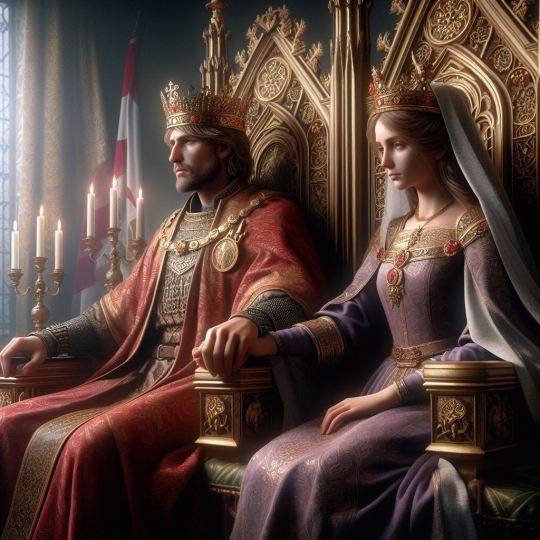
Listes des personnes et des OC pour l'instant :
- Baudouin IV de Jérusalem (5 histoires). (Plus à venir. )
Il est souvent associé à Alix de Tripoli, personnage fictif qui est la fille unique de Raymond III de Tripoli et qui a grandi à Jérusalem. Alix est douce, gentille, mais aussi intrépide et courageuse. Baudouin et Alix s'aiment infiniment, mais ils savent tous les deux que leur amour est impossible.
Mini-série : Guérison. Baudouin est guéri de la lèpre et décide quoi faire de sa vie. (À venir)
- Édouard Ier d'Angleterre (3 histoires) (Plus à venir. )
Il est souvent associé à sa femme Éléonore de Castille. Leur amour est inspirant et unique. Un OC peut apparaître également sous la forme d'Aliénor de Mercoeur, qui est la dame de compagnie et meilleure amie de la reine d'Angleterre.
Mini-série : Seconde Guerre des Barons avec le point de vue d'Henry III, Éléonore de Provence, Éléonore de Castille, Richard de Cornouailles et lord Édouard sur la bataille de Lewes de 1264. (Publié)
- Bohémond de Tarente (3 histoires) (Plus à venir. )
Bohémond est souvent associé à Alix de Sicile, une OC fictive qui est son épouse. Ils mettent du temps à se cerner l'un l'autre, mais après avoir découvert que sa femme n'est pas qu'une jolie chose à son bras, il est son plus fervent admirateur.
Mini-série : Chefs de la première croisade avec Godefroy de Bouillon, Baudouin de Boulogne, Hugues de Vermandois, Raymond de Saint-Gilles, Etienne de Blois, Robert de Flandres, Robert de Normandie, Adhémar de Monteil, Tancrède de Hauteville et bien sûr Bohémond. (En cours)
Personnages sans lien avec Bohémond de Tarente, Édouard Ier et Baudouin IV ou une mini-série.
- Louis IX de France, Saint-Louis (1 histoire)
- Édouard II d'Angleterre (À venir)
- Alphonse de Poitiers et sa femme Jeanne de Toulouse (À venir)
- Sybille de Jerusalem et Guy de Lusignan (À venir)
- Agnès de Courtenay (À venir)
- Amaury II de Jérusalem ( À venir)
- Aliénor d'Aquitaine ( À venir)
- Henry II d'Angleterre ( À venir)
- Richard cœur de Lion (À venir)
- Jean Sans Terre ( À venir)
Et bien d'autres....
Si vous voulez en voir plus n'hésitez pas à proposer des personnes ou des événements.
#fanfic#history medieval#medieval history#bohemond i of antioch#king baldwin#baldwin iv#edward ii#Edward I#booklr#france#england#eleonor of castile#eleanor of aquitaine#plantagenet#plantagenets
7 notes
·
View notes
Text







The Hotel Falligan is a historic building on the Kouter in the Belgian city of Ghent. In this post only some pictures of the staircase hall.
The rococo town house was built in 1755 for Hector-Gabriel-Joseph Falligan (from a noble family from the region of Anjou -around Angers, Pays de la Loire- in France) and his wife Jeanne Agnès de Pestre (heiress of a merchant in colonial goods). The building has Corinthian columns with statues of Apollo and Diana. The large, central balcony with hand-wrought work is supported by four stylized consoles. At the rear there is a courtyard with a view of the ornate coach houses, decorated with the coats of arms of the Falligan and Depestre families on the pediment. In 1804 the literary society Club des Nobles settled in the building. Inside there are oriental-inspired murals of Parisian origin.
The building has been a protected monument since 1990. In December 2012, several scenes were shot in this building for the feature film Grace of Monaco about the life of film star and princess Grace Kelly.
#gent#ghent#gand#gante#flanders#belgium#rococo#rococco#baroque#interiors#historical#historical interior#history#nicole kidman#monaco#interior#historic buildings#luxury
6 notes
·
View notes
Photo
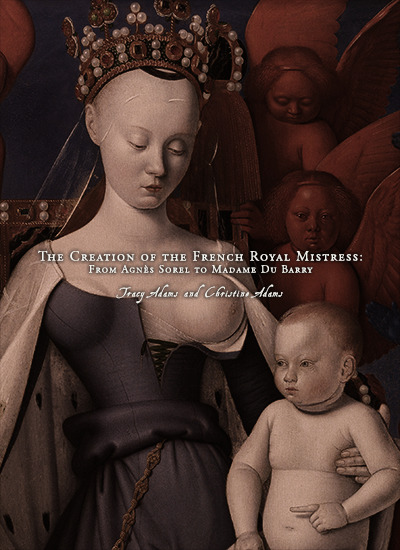
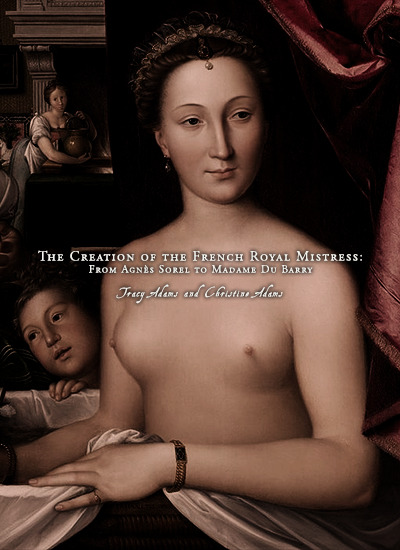


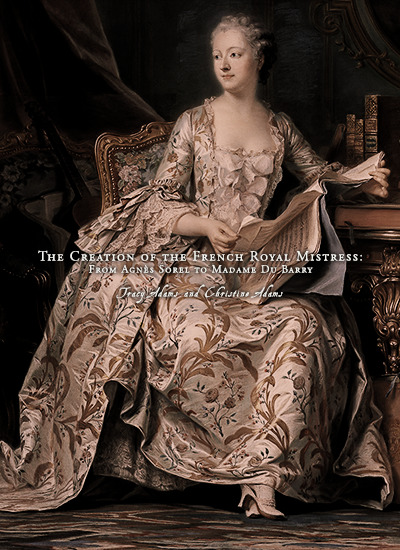
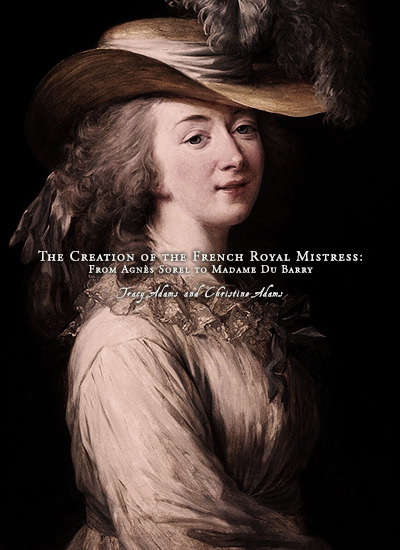
Favorite History Books || The Creation of the French Royal Mistress: From Agnès Sorel to Madame Du Barry by Tracy Adams and Christine Adams ★★★★☆
This study explores the sociogenesis and development of the position in France, examining the careers of nine of its most significant holders: Agnès Sorel, Anne de Pisseleu d’Heilly, Diane de Poitiers, Gabrielle d’Estrées, Françoise Louise de La Baume Le Blanc, Françoise Athénaïs de Rochechouart de Mortemart, Françoise d’Aubigné, Jeanne-Antoinette Poisson, and Jeanne Bécu. Although kings had always had extraconjugal sexual partners—some of them powerful, such as Alice Perrers or Jane Shore—only in France did the royal mistress become a tradition, a quasi-institutionalized political position, generally accepted if always vaguely scandalous. And yet the position has been studied only in popular narrative histories intended to titillate. Other powerful female roles central to royal family life, such as the queen, the queen’s entourage, and the female regent, an unofficial role once considered somewhat illegitimate, have received serious attention in recent years, as have individual mistresses. However, the important and enduring position of French royal mistress per se has not been explored.
The study’s point of departure is a simple question: What was it about France? We would like to be very specific about our approach to this question. The creation of the role could be examined from any number of valid and enlightening perspectives. For example, it could be approached through a psychoanalytic lens, to hypothesize about the hidden emotional reasons why the role emerged when it did. Or it could be examined within the context of the Querelle des femmes, that long-term debate over the merits and faults of women, which corresponds, chronologically, to the appearance of the powerful royal mistress in France. However, given our own critical inclinations, we have opted to examine the intellectual, emotional, and physical environment that made emergence of the role possible.
We take as the basis of our analysis Fernand Braudel’s three-part schema of history, which differentiates long- from medium-term structures and both of these from short-term events, and, in this introduction, we initiate the study by applying the schema to the period between 1450 and 1540. Agnès Sorel, often considered to be the first significant French royal mistress, died in 1450; around 1540 Anne de Pisseleu d’Heilly, the Duchess of Étampes (1508–1580), begins to appear in ambassador reports as a central figure in court politics. As we will see in chapter 1, although indirect evidence attests to Agnès’ political influence, it was not widely recognized during her own time. In contrast, no one doubted Anne de Pisseleu’s power. Between these two dates, then, something occurs that makes it possible for the king’s mistress to be taken seriously as a political adviser.
#historyedit#house of valois#house of capet#french history#european history#women's history#history#history books#nanshe's graphics
63 notes
·
View notes
Text

La Mode nationale, specimen, 1 decembre 1885, Paris. No. 1. — Toilette de dîner. Modèle de la maison de l'Opéra, 20, avenue de l'Opéra. Bibliothèque nationale de France
No. 1. Robe de dîner en broché grenat de Syrie. Le corselet lacé à l'Agnès Sorel et les parements de la manche en velours grenat tréflé d'or, avec bordure de grosses perles d'or en ourlet. La guimpe froncée est en satin et colletée de velours.
No. 1. Syrian garnet paperback dinner dress. The Agnès Sorel laced corselet and the sleeve cuffs in gold-trefoiled garnet velvet, with a border of large gold pearls at the hem. The gathered wimple is satin and trimmed with velvet.
Notre Programme
En prenant pour titre: La Mode nationale, nous avons voulu affirmer hautement nos intentions de ne donner place dans nos colonnes qu'aux modes vraiment françaises. Sans vouloir faire ici de politique et sans témoigner d'un chauvinsime exagéré, nous ne pouvons pourtant nous empêcher de constater les prétentions de nos voisins, qui, surtout depuis 1870, se sont mis à nous disputer le privilège de la mode, lequel nous a appartenu, sans conteste, pendant des siècles.
Certains gravure de modes nous viennent de l'étranger, sous prétexte que la main-d'œuvre est là-bas meilleur marché que chez nous: de là un tort réel apporté au commerce national, parce que ces gravures sont la reproduction de modèles qui ne sont pas les nôtres.
La Mode nationale maintiendra très haut le drapeau de l'industrie française. Notre journal, confié à nos meilleurs artistes, n'empruntera rien aux étrangers. C'est dire qu'il est destiné à devenir le modèle du bon ton et l'organe accrédité de la bonne compagnie.
La Mode nationale paraîtra réguilièrement le 1er et le 15 de chaque mois, à dater du 1er janvier 1886.
La Rédaction.
—
By taking the title: La Mode nationale, we wanted to strongly assert our intentions to only give space in our columns to truly French fashions. Without wanting to get political here and without showing exaggerated chauvinism, we cannot help but note the pretensions of our neighbors, who, especially since 1870, have begun to dispute with us the privilege of fashion, which has belonged to us, without question, for centuries.
Some fashion engravings come to us from abroad, under the pretext that labor is cheaper there than at home: hence a real harm to national trade, because these engravings are the reproduction of models which are not ours.
La Mode nationale will keep the flag of French industry very high. Our newspaper, entrusted to our best artists, will borrow nothing from foreigners. This means that it is destined to become the model of good tone and the accredited organ of good company.
La Mode nationale will appear regularly on the 1st and 15th of each month, starting from January 1, 1886.
La Rédaction.
#La Mode nationale#19th century#1880s#1885#on this day#December 1#periodical#fashion#fashion plate#cover#cover redo#description#bibliothèque nationale de france#dress#dinner#Modèles de chez#Maison de l'Opéra
20 notes
·
View notes
Text


Ô Saisons Ô Châteaux (Agnès Varda, 1958)
- Châteaux de la Loire (Val de Loire), France
#o saisons o chateaux#ô saisons ô châteaux#agnes varda#autumn#châteaux du loire#val de loire#1950s films#chateau#castle#jardin#cinemtography#du côté de la côte#du cote de la cote#films français#french films
54 notes
·
View notes
Text
Historical Figures Brought To life. You Haven't Seen Anything Like This Before!
youtube
Van Dick, Henrietta Maria of France, 1638
Sandro Botticelli self-portrait in his Adoration of the Magi, 1475
Mary of Guise, Cornelle de Lyon, 1537
Agnès Sorel
Elisabetta Gonzaga, Raphael, 1504-1505
Kublai Khan, Araniko, 1294
Avdotya Golytsina
Donatello, anonymous
Wu Zetian, anonymous
Elizabeth Bathory, anonymous, 1650
2 notes
·
View notes
Text
Racing Dresses of 1909 - All photos from Les Modes (Les Modes : revue mensuelle illustrée des arts décoratifs appliqués à la femme) collection of Bibliothèque national de France unless otherwise noted
Left 1909 (1 April issue) Bernard dresses photo-Félix. From gallica.bnf.fr; fixed spots & flaws w Pshop 1024X1405.
Right 1909 (1 June issue) Robe por les courses by Margaine-Lacroix photo-Félix. From gallica.bnf.fr; fixed spots & flaws w Pshop 1024X1402.


Left 1909 (1 June issue) Robe pour les courses by Caroline. photo-Henri Manuel. From gallica.bnf.fr; fixed spots & flaws w Pshop 1024X1407.
1909 (27 June) Elegants à hippodrome (Bibliothèque nationale de France - Paris, France). From their Gallica collection; removed spots and flaws with Photoshop 784X1189.


Left 1909 (27 June) Grand Prix de Paris (Bibliothèque nationale de France - Paris, France). From their Gallica collection; removed numbers flaws and spots with Photoshop 950X1306.
1909 (27 June) Toilettes at the Grand Prix de Paris (Bibliothèque nationale de France - Paris, France). From their Gallica collection; removed spots, minor flaws and long linear flaws with Photoshop 890X1261.


Left 1909 (1 July issue) Mlle Cesbron-Norbens in toilette pour les courses by Maison Agnès photo-Félix. (Bibliothèque nationale de France - Paris, France). From their Gallica collection; removed spots and flaws with Photoshop 1024X1428
Right 1909 (1 August issue) toilettes vues des courses by Bechoff-David. From gallica.bnf.fr; fixed spots & upper border w Pshop 1253X1023.
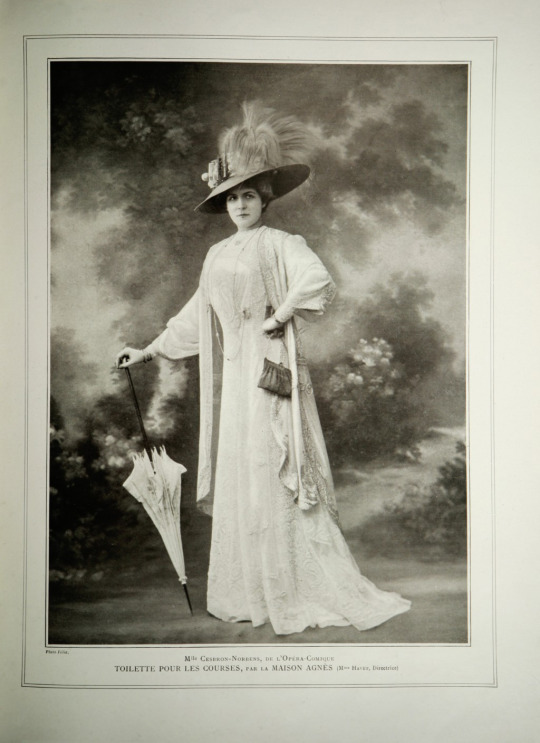
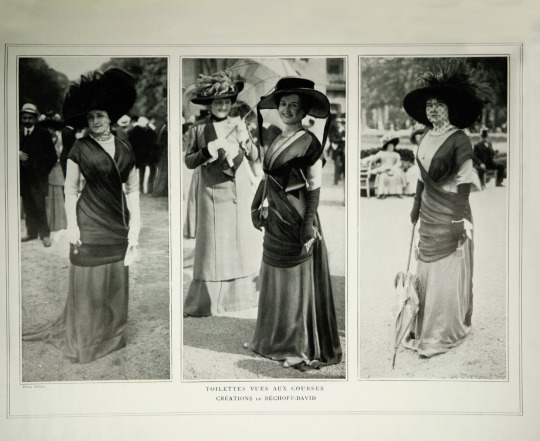
1909 Dress. From tumblr.com/fashionsfromthepast/723742458755923968/costumeloverz71-dress-1909? 594X896.

#1909 fashion#1909#1900s fashion#Belle Époque fashion#Belle Époque#horse races dress#Bernard#Félix#Margaine-Lacroix#robes por les courses#Caroline#Henri Manuel#Mlle Cesbron-Norbens#Maison Agnès#Bechoff-David#wide hat#feathered hat#parasol#close skirt#long sleeves
11 notes
·
View notes